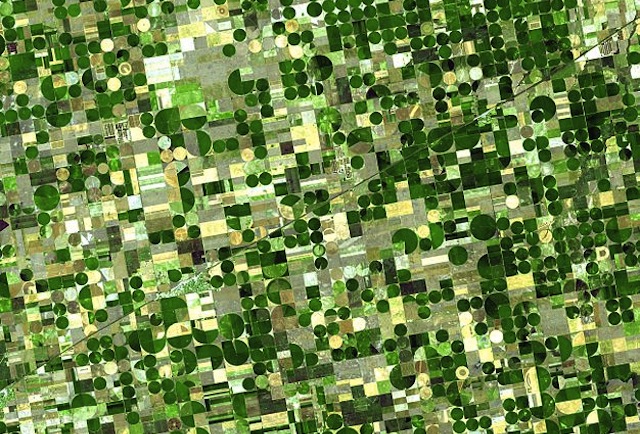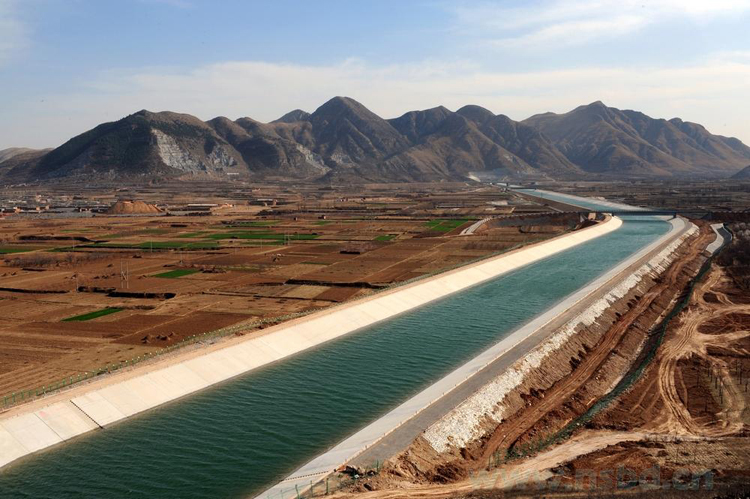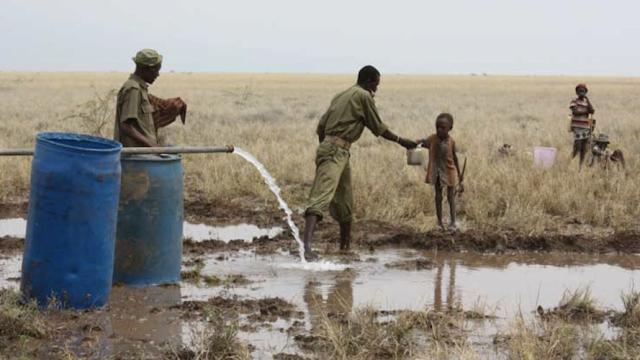This week’s jaw-dropping news that a massive aquifer has been discovered beneath Kenya conjured up all sorts of visions of the desert instantly greening like a Chia Pet. But it’s not as easy as digging a well — the aquifer opens up a whole other set of political and environmental issues that face the African nation.
News of the aquifer was so celebrated because it’s estimated that 40 per cent of Kenyans currently have no access to clean water. Although the amount of water in the aquifer may be enough to meet the country’s water needs for 70 years, delivering it to that 40 per cent will require extensive upgrades to infrastructure and technology, not to mention monitoring the environmental impact so the aquifer isn’t exploited. And that’s where other countries facing water shortages are currently having problems.

The US once faced a similar challenge. The Great Plains were about as productive as the Sahara until settlers discovered the Ogallala Aquifer (or High Plains Aquifer). The shallow underground water reserve is one of the largest aquifers in the world, covering 450,000sqkm from South Dakota to Texas. Cities sprung up in its footprint with the promise of plentiful water, but severe droughts coupled with poor farming techniques resulted in the devastation of the Dust Bowl. It was only when center-pivot irrigation was introduced in 1948 — imprinting those green Pac-Mans on the landscape everywhere — that residents were able to effectively tap and utilise the great amounts of water stored beneath their feet, transforming the region into one of the most productive agricultural zones in the country.
But aquifers are not bottomless fountains of youth for increasingly dependent metropolises. The advances in irrigation which allowed farmers to access the aquifer is now sucking it dry. Aquifers can become naturally replenished, but not at the rate we’re consuming water. New reports this year estimate that the Ogallala could be 70 per cent depleted by 2060.

China is also seeing a Dust Bowl-type effect in the north part of its country, with desertification occurring due to overfarming and changing weather patterns. Their solution is the ambitious South-North Water Diversion Project which started testing earlier this summer. Like a Great Wall for water, the project plans to pump about six trillion gallons per year from the Yangtze River in the south to the drier, more highly populated areas of the north, including Beijing, where the population just topped 20 million. The series of tunnels and canals will take 50 more years to complete at a total cost of $US62 billion plus the displacement of over 350,000 people. And not even that will be enough fresh water for the region, so Beijing is also planning an expansion for its massive desalination plant.

Perhaps the most famous (or infamous) example of moving water to fuel a city, the Los Angeles Aqueduct, turns 100 this year. The order for the water came straight from the top: President Theodore Roosevelt mandated that the water of the Owens Valley be diverted to Los Angeles in the name of progress, where it would do the “greatest good for the greatest number.” This was not the belief of the local farmers who watched their water supply evaporate and executed attacks on the infrastructure known as the California Water Wars (a story familiar to anyone who’s seen Chinatown). In recent years the dry-lakebed-formerly-known-as-Owens Lake has become such an environmental hazard that LA’s Department of Water and Power has to use sprinklers (!!!) to control the toxic dust.
The issue gets stickier when it crosses borders. The US is guilty of drawing so much water off the Colorado River that it no longer flows into the Gulf of Mexico. Now our thirst for fresh water has international implications, altering the the environmental and economic livelihood of Mexico.

To avoid these kinds of conflicts, UNESCO, which facilitated the discovery of this Kenyan aquifer, has been adding to its atlas of underground water (above) for more than decade. In addition to employing new technologies to find water, they’ve also been mapping over 270 “transboundary” sources, meaning sources that span political borders and could be a source of potential conflict. Some of the most arid regions on the planet are also some of the most unstable, and the discovery of more aquifers will require a different level of diplomatic negotiations, like a famous 1995 agreement which mediates the groundwater resources shared by Israel and Palestine.
By 2025, 1.8 billion people will be facing water scarcity, and two-thirds of the planet’s population will be water-stressed, according to the UN’s statistics on water and cities. Just looking at those facts makes it feel as if the predicted “water wars” are imminent. Water policy expert Mark Zeitoun may have explained it best when framing the value of aquifers in today’s quickly changing world: “Typically they are seen in much the same way as diamond mines.”
[National Geographic, NASA, New Scientist, New York Times, Places Journal, Water and Power]
Picture: UNESCO
